Welcome to our comprehensive guide on Lilaeopsis Brasiliensis, the aquatic carpet plant that can bring natural beauty and vibrancy to your freshwater aquarium.
Also known as the Brazilian Micro Sword, this low-maintenance plant is a favorite among aquarists for its ability to create a lush carpet effect in the foreground of their aquatic setups.
In this guide, we will delve into the history, characteristics, and care requirements of Lilaeopsis Brasiliensis.
From planting tips to lighting requirements, nutrient intake, and common challenges, we will provide all the information you need to grow and maintain this stunning plant in your aquarium successfully.
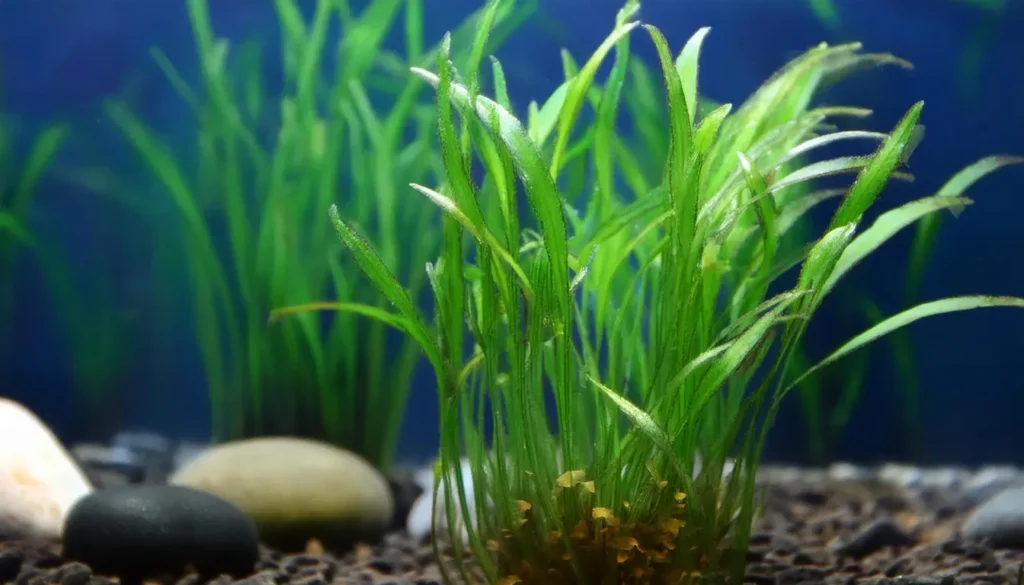
Key Takeaway
- Lilaeopsis Brasiliensis is a freshwater aquarium plant that can create a beautiful carpet effect in your aquarium’s foreground.
- It is commonly known as the Brazilian Micro Sword and is a low-maintenance plant.
- Proper lighting, nutrient supplementation, and regular pruning are essential for the healthy growth of Lilaeopsis Brasiliensis.
- Positioning the plant strategically in your aquascape to achieve the desired aesthetic appeal is important.
- By following the steps and recommendations in this guide, you can successfully grow and maintain Lilaeopsis Brasiliensis in your aquarium.
Quick Stats
| Attribute | Details |
| Family Name | Apiaceae |
| Origin | South America |
| Height | 4-7 cm (1.5-2.75 inches), can grow taller in lower light |
| pH Range | 6.0 – 7.5 |
| CO2 Requirement | Low to Moderate |
| Growth Rate | Slow to Moderate |
| Care Level | Easy to Moderate |
| Color Form | Green |
| Water Conditions | 18-26°C (64-79°F), adaptable to a wide range of water hardness |
| Max Size | Forms a dense carpet, rarely exceeds 7 cm in height |
| Lighting | Moderate to High |
| Supplements | Benefits from CO2 supplementation; root tabs and liquid fertilizers enhance growth |
| Placement | Foreground |
| Propagation | By runners |
What Is Lilaeopsis Brasiliensis?
Lilaeopsis Brasiliensis, commonly known as the Brazilian Micro Sword, is an aquatic plant in the Apiaceae family. It is also called carpet grass, Copragrass, and Micro Sword Grass.
This plant is native to South America and grows both emergently and submerged in streams and riverbanks throughout the region.
Lilaeopsis Brasiliensis is a versatile plant mainly used foreground in aquariums due to its compact growth form. Densely planted, it resembles wild grass and creates a lush carpet effect.
History And Origin
- Lilaeopsis Brasiliensis is a plant that traces its origins to South America, specifically countries such as Argentina, Brazil, and Paraguay.
- In its natural habitat, this aquatic plant thrives along the lakes and streams of these regions and in ditches, swamps, and other wetlands.
- Its ability to adapt to various aquatic environments has made it a popular choice among aquarists worldwide.
- With a long-standing history in the aquarium hobby, Lilaeopsis Brasiliensis has captivated enthusiasts with its natural look and ability to create a lush carpet effect in home aquariums.
- It has become a staple for beginners and experienced aquarists, adding a touch of beauty and tranquility to their aquatic setups.

Physical Characteristics
- Leaf Structure: It features narrow, grass-like leaves that grow in dense clusters. The leaves are typically green in color and have a sleek, elongated shape resembling blades of grass.
- Size: Brazilian Micro Sword typically grows to a moderate height, with its leaves reaching up to a few inches in length. However, under optimal conditions, it can form dense carpets that cover the substrate surface.
- Growth Form: Lilaeopsis brasiliensis is a creeping plant that spreads horizontally along the substrate through runners. It forms dense mats or carpets, creating a lush and verdant foreground in aquariums.
- Root System: The plant develops a fibrous root system that anchors it firmly into the substrate. These roots help stabilize the plant and absorb nutrients from the substrate.
Lighting Requirements For Healthy Growth
- Adequate lighting is crucial for the healthy growth of Lilaeopsis Brasiliensis. This plant responds well to bright and intense light, which promotes a carpet-like growth form. In low-to-moderate dimmer light, the plant tends to grow taller rather than forming a dense carpet.
- Providing bright and intense light to the Lilaeopsis Brasiliensis is recommended to achieve the desired carpet effect. Avoid shading the plants with other aquarium decorations or floating plants, as this can hinder their growth.
RELATED: Dwarf Chain Sword For A Lush Carpet In Your Aquascape
Temperature Parameter For Robust Growth
For robust growth, Lilaeopsis brasiliensis thrives best within a temperature range of 68°F to 78°F (20°C to 26°C). This temperature range replicates its native tropical habitat, providing optimal conditions for healthy growth and development.
Consistent temperatures within this range help promote vigorous growth and encourage the formation of lush carpets in the aquarium.
Optimal Water Condition
- pH: Ideally, maintain a slightly acidic to neutral pH level in the range of 6.5 to 7.5. This pH range mimics the plant’s native habitat and supports healthy growth.
- Water Hardness: Aim for moderate water hardness with a general hardness (GH) of 3 to 8 dGH and a carbonate hardness (KH) of 3 to 6 dKH. Brazilian Micro Sword can adapt to a wide range of water hardness levels, but moderate hardness is preferred.
- Temperature: Keep the water temperature within the range of 68°F to 78°F (20°C to 26°C). This temperature range is suitable for tropical aquatic plants like Lilaeopsis brasiliensis and supports optimal growth and development.
- Lighting: Provide moderate to high lighting conditions. Brazilian Micro Sword requires sufficient light for photosynthesis and carpeting growth. LED lights with a color temperature around 6500 Kelvin and a light intensity of 30 to 50 PAR (Photosynthetically Active Radiation) at the substrate level are ideal.
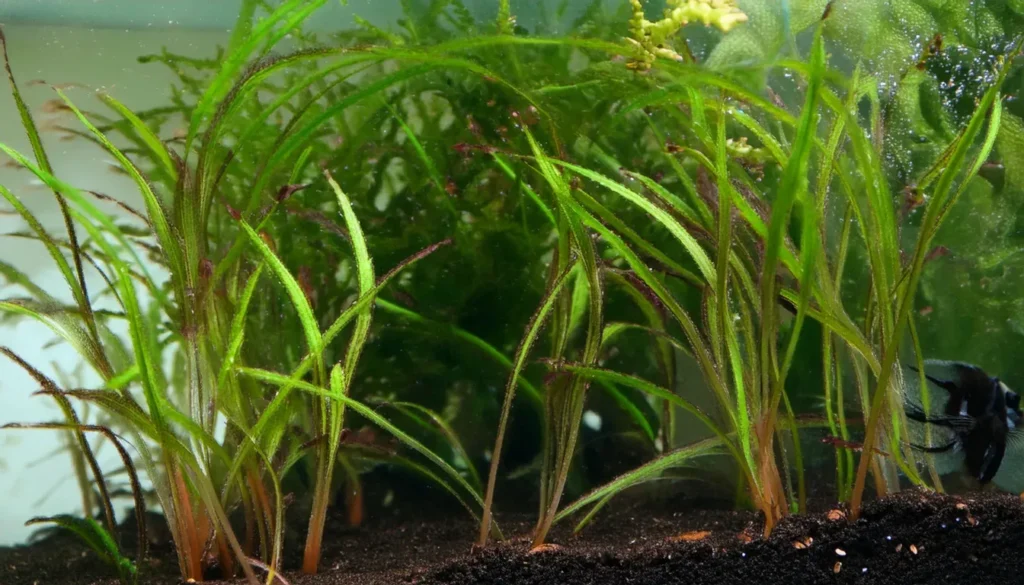
Substrate Requirement
- Fine-grained Substrate: Brazilian Micro Sword thrives in substrates with fine grains, such as sand or fine gravel. The substrate should be smooth and not too coarse to allow the delicate roots to spread easily.
- Nutrient-rich Substrate: Use a nutrient-rich substrate or supplement the substrate with root tabs or fertilizers to provide essential nutrients for the plant’s growth. A substrate rich in nutrients supports healthy root development and robust growth.
- Depth: Provide a substrate layer with a depth of at least 1.5 to 2 inches (3.8 to 5 centimeters). A deeper substrate layer allows the roots to anchor securely and spread horizontally, facilitating the formation of a dense carpet.
- pH Buffering Capacity: Choose a substrate with good pH buffering capacity to help maintain stable water parameters. Brazilian Micro Sword prefers slightly acidic to neutral pH levels (pH 6.5 to 7.5), and a substrate with pH buffering capacity can help stabilize the pH within this range.
Strategic Positioning In The Aquascape
- The positioning of Lilaeopsis Brasiliensis in the aquascape is important for achieving the desired look and impact. This plant is commonly used in the foreground and midground of aquatic setups.
- When placed in the foreground, Lilaeopsis Brasiliensis creates a lush carpet effect, adding a natural and visually stunning element to the aquarium. Its compact growth form and grass-like appearance make it ideal for creating a vibrant and eye-catching foreground.
- In the midground, Lilaeopsis Brasiliensis can complement other plant species and create depth and dimension in the aquascape. Its narrow leaves and vibrant color variations add a unique touch to the midground, enhancing the overall aesthetic appeal.
Recommended Tank Size
- Nano to Medium Tanks: Brazilian Micro Sword is well-suited for nano to medium-sized aquariums, typically ranging from 5 gallons (19 liters) to 20 gallons (76 liters). These smaller tanks provide sufficient space for cultivating a carpet of Brazilian Micro Sword while allowing for easy maintenance and aquascape management.
- Foreground Planting: Since Brazilian Micro Sword is often used as a foreground or midground plant to create lush carpets, consider tanks with shallower depths. Tanks with dimensions like 20 inches (50 centimeters) in length, 12 inches (30 centimeters) in width, and 12 inches (30 centimeters) in height are suitable for showcasing the carpeting effect of this plant.
- High-tech Setups: For high-tech planted aquarium setups with advanced lighting, CO2 supplementation, and nutrient dosing, larger tanks ranging from 20 gallons (76 liters) to 50 gallons (189 liters) or more may be preferred. These larger tanks provide more space for planting Brazilian Micro Sword densely and can accommodate the additional equipment required for maintaining optimal conditions.
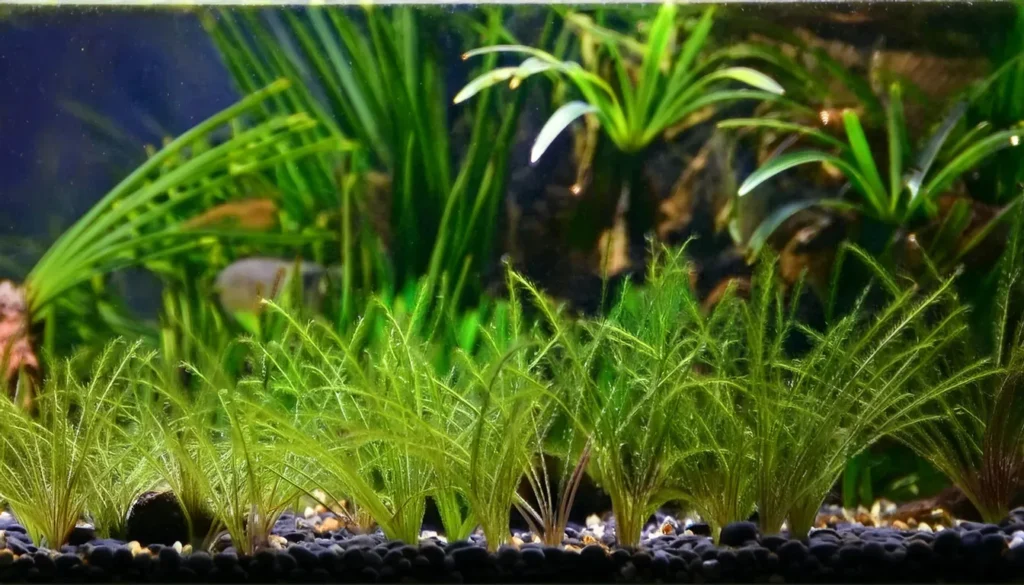
Suitable Tank Mates
- Small to Medium-sized Fish: Peaceful fish species such as tetras, rasboras, danios, guppies, and smaller corydoras catfish are excellent companions for Brazilian Micro Sword. Avoid larger or aggressive fish that may uproot the delicate roots or disturb the plant.
- Shrimp and Snails: Neocaridina and Caridina shrimp, such as Cherry Shrimp and Crystal Red Shrimp, as well as peaceful snails like Nerite Snails and Malaysian Trumpet Snails, make great tank mates. They help keep the aquarium clean by consuming algae and detritus without causing harm to the plants.
- Dwarf or Peaceful Cichlids: Some dwarf cichlid species, such as Apistogramma and German Blue Rams, can coexist peacefully with Brazilian Micro Sword if the tank is appropriately sized and densely planted. Avoid larger or more aggressive cichlid species that may disrupt the tank’s peaceful environment.
Nutritional Requirements Of The Plant
Lilaeopsis brasiliensis, or Brazilian Micro Sword, primarily derives its nutritional requirements from the substrate and water column. Like most aquatic plants, it requires essential macro and micronutrients for healthy growth and development.
Here’s a breakdown of its nutritional requirements:
Macronutrients: Brazilian Micro Sword requires three primary macronutrients:
- Nitrogen (N): Nitrogen is essential for the synthesis of proteins and chlorophyll, vital components of plant cells. It is often available in the form of nitrates (NO3-) or ammonium (NH4+).
- Phosphorus (P): Phosphorus is necessary for energy transfer and is involved in various metabolic processes, including photosynthesis and cell division. It is typically available in the form of phosphates (PO4^3-).
- Potassium (K): Potassium plays a crucial role in enzyme activation, osmoregulation, and the regulation of stomatal openings. It is essential for overall plant health and vigor.
Micronutrients: Brazilian Micro Sword also requires several micronutrients in smaller quantities, including:
- Iron (Fe), Magnesium (Mg), Calcium (Ca), Sulfur (S), Zinc (Zn), Manganese (Mn), Copper (Cu), Boron (B), Molybdenum (Mo), and Chlorine (Cl).
- These micronutrients are involved in various physiological processes, such as photosynthesis, enzyme activation, and cell structure.
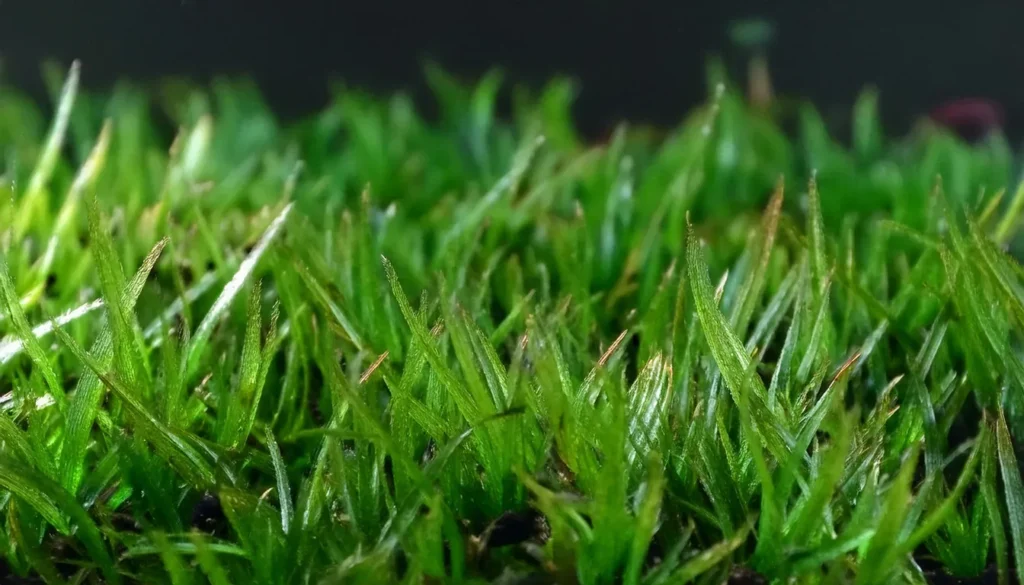
Cultivation Tips
- Substrate: Provide a nutrient-rich substrate that is fine-grained and well-draining. Brazilian Micro Sword has delicate roots that anchor into the substrate, so a nutrient-rich substrate will support healthy root growth and development. Use a substrate specifically designed for planted aquariums or add root tabs to provide essential nutrients.
- Lighting: Provide moderate to high-intensity lighting for Brazilian Micro Sword. Adequate lighting is crucial for photosynthesis and healthy growth. LED lights with a spectrum that includes both red and blue wavelengths are suitable for promoting plant growth. Aim for 8-10 hours of light per day to simulate natural daylight conditions.
- Carbon Dioxide (CO2): While Brazilian Micro Sword can grow in aquariums without added CO2 supplementation, providing CO2 can significantly enhance its growth rate and overall health. Consider supplementing with CO2 injection or using liquid carbon supplements to ensure optimal carbon availability for photosynthesis.
RELATED: A Comprehensive Guide To Planting Cryptocoryne Wendtii Tropica
Plant Propagation Tips
- Identify Runners: Brazilian Micro Sword sends out thin, horizontal stems called runners, which produce new plantlets along their length. These runners grow outward from the mother plant and eventually develop roots and leaves.
- Encourage Runner Formation: Providing optimal growing conditions, including adequate light, CO2, and nutrient levels, will encourage the formation of runners. Ensure that the plant is healthy and actively growing to promote runner production.
- Monitor Growth: Regularly inspect the base of the mother plant for the emergence of new runners. Once runners start to appear, monitor their growth and development to determine when they are ready for propagation.
- Separate Runners: Once the runners have developed roots and several new plantlets along their length, carefully separate them from the mother plant. Use sharp scissors or aquascaping tools to cut the runner between the plantlets and the mother plant.
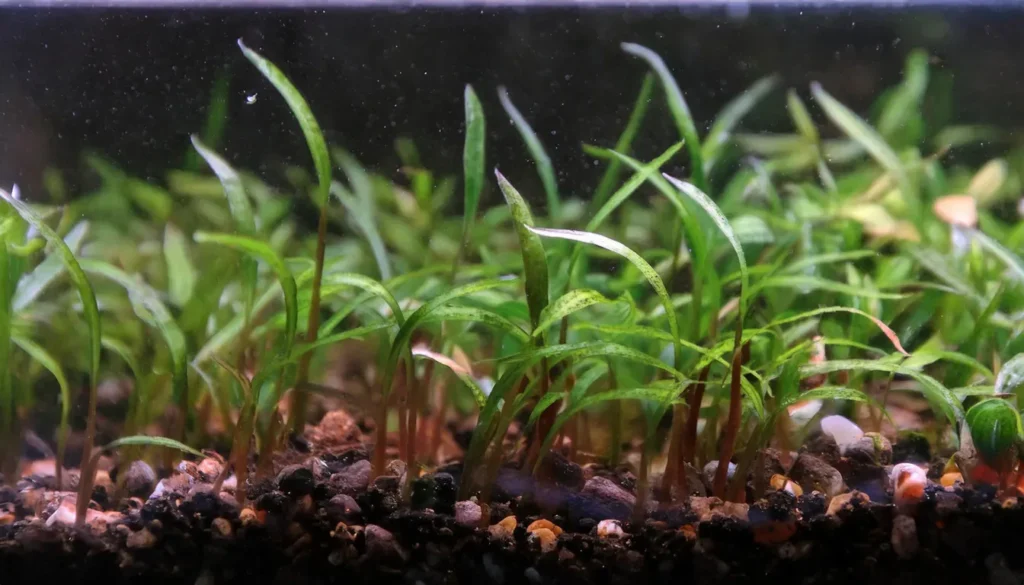
Benefits Of Planting Lilaeopsis Basiliensis
- Aquascape Aesthetics: Lilaeopsis brasiliensis forms dense, lush carpets of bright green foliage, creating a visually appealing foreground or midground carpet in your aquarium. Its grass-like appearance adds natural beauty and enhances the overall aesthetic of your aquascape.
- Natural Habitat Replication: This plant is native to South America and is often found in the shallow, slow-moving waters of streams and rivers. By planting Lilaeopsis brasiliensis in your aquarium, you can replicate the natural habitat of aquatic ecosystems, providing a more naturalistic environment for your fish and other inhabitants.
- Oxygenation: Like all aquatic plants, Lilaeopsis brasiliensis contributes to oxygenation in the aquarium during photosynthesis. This helps maintain healthy oxygen levels for fish and other aquatic inhabitants, promoting their overall well-being.
- Water Filtration: Brazilian Micro Sword plants absorb nutrients from the water column, helping to reduce levels of ammonia, nitrites, and nitrates in the aquarium. By acting as natural filters, they contribute to water clarity and quality, creating a healthier environment for aquatic life.
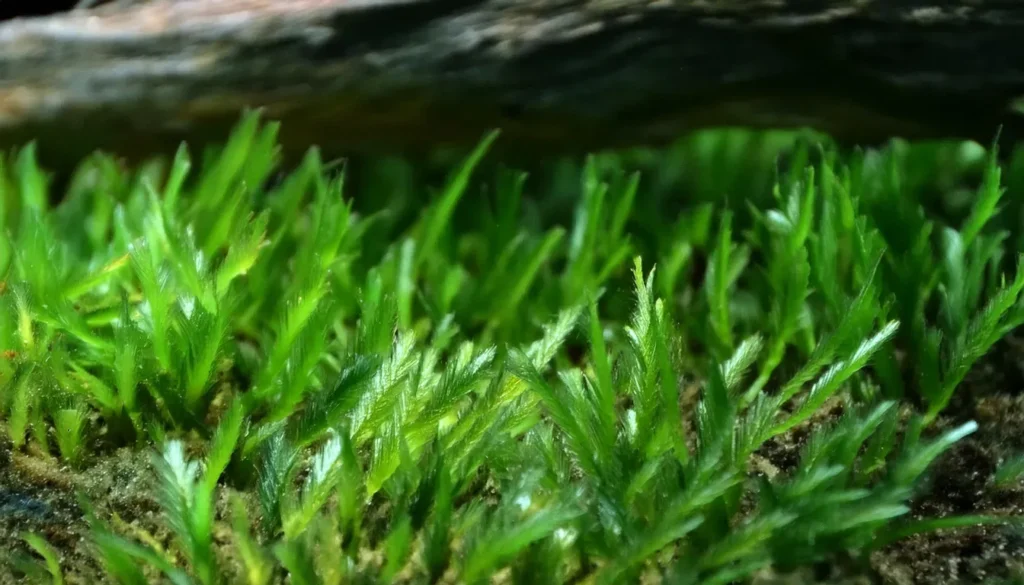
Conclusion
Lilaeopsis Brasiliensis is a vibrant and stunning aquatic plant that can add a lush carpet effect to home aquariums. This plant can thrive and create an eye-catching display with proper care and maintenance.
From planting tips to lighting requirements, nutrient intake, and common challenges, this guide has provided a comprehensive overview of Lilaeopsis Brasiliensis.
By following the steps and recommendations outlined in this guide, you can successfully grow and maintain this beautiful plant in your own aquatic setup. Enjoy the natural beauty and charm that Lilaeopsis Brasiliensis brings to your aquarium.
Frequently Asked Questions
What Is The Nutrient Intake Requirement For Lilaeopsis Brasiliensis?
Lilaeopsis Brasiliensis benefits from a nutrient-rich substrate and can also be supplemented with fertilizers or CO2 infusion to provide additional nutrients for healthy growth.
Where Should I Position Lilaeopsis Brasiliensis In My Aquascape?
Depending on your aesthetic goals, Lilaeopsis Brasiliensis can be placed in the foreground or midground of the aquascape. It creates a lush carpet effect in the foreground and adds depth in the midground.
What Are The Common Challenges Of Growing Lilaeopsis Brasiliensis?
Overcrowding and leggy growth can be common challenges when growing Lilaeopsis Brasiliensis. Regular pruning and providing adequate spacing between stems can help prevent these issues.
How Can I Propagate Lilaeopsis Brasiliensis?
Lilaeopsis Brasiliensis can be propagated through runners, which can develop naturally or be manually propagated by pinching off runners from the original plant and planting them in a new location.
Is Lilaeopsis Brasiliensis Suitable For My Aquarium?
Lilaeopsis Brasiliensis is suitable for small to medium-sized aquariums and can be used in larger setups as well. Consider the needs and compatibility with other tank residents and your aesthetic goals when deciding if it is suitable for your aquarium.
- Unveiling The Wonders Of Riccia Fluitans In Aquascapes - August 7, 2024
- Vallisneria Gigantea Var. Guide To Care And Cultivation At Home - July 31, 2024
- Vesicularia Dubyana Care & Growth Guide Tips For Beginner Gardeners - July 30, 2024
